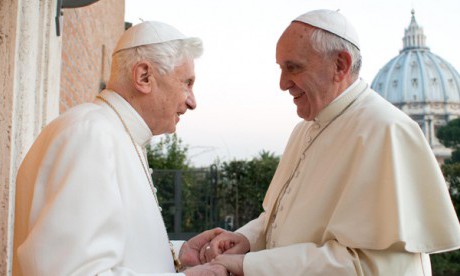Pope Francis delivered another gesture this week destined to burnish his legend for both humility and reform, deciding that an annual Mass in which newly appointed archbishops from around the world receive their symbol of office will no longer be held in Rome, but in their home archdiocese.
That event, called the Pallium Mass, traditionally was a highlight of the Roman summer.
Francis has now taken himself out of the equation, stipulating that the pallium, a woolen cloth symbolizing service, will be presented to each archbishop individually by the papal ambassador in his country.
Most people likely will see it as another way in which Francis is breaking with tradition, playing down the trappings of a royal court in the Vatican and emphasizing the importance of the local church.
Those who paid careful attention during the Benedict XVI years probably would agree, expect for the “breaking with tradition” part.
In truth, Francis’ latest reform is not a departure from Benedict, but yet another instance in which the two pontiffs seem to be singing from the same songbook.
One of Benedict’s own first decisions after he took office in 2005 was that he would no longer preside personally at beatification Masses, and that those services would no longer be held in Rome. (Beatification is the last step before sainthood, allowing someone to be called “Blessed.”)
That choice, too, was about the importance of the local Church, since beatification authorizes veneration of a figure for a local community, while canonization is for the entire Church.
Benedict XVI was also sending a signal that the pope doesn’t have to be the center of attention — the same point Francis is making about the pallium.
That’s just the tip of the iceberg in terms of continuity. Consider these other examples:
Climate change/the environment: As the world awaits Francis’ forthcoming encyclical letter on ecology, it’s worth remembering that Benedict XVI devoted so much attention to the environment that he was dubbed the “Green Pope.”
Among other measures on his watch, the Vatican signed an agreement to become Europe’s first carbon-neutral state (albeit a tiny one) by replanting a stretch of Hungarian forest to offset its carbon use, and installing solar panels atop the Paul VI Audience Hall. Continue reading
Sources
- Crux
- Image: The Guardian
